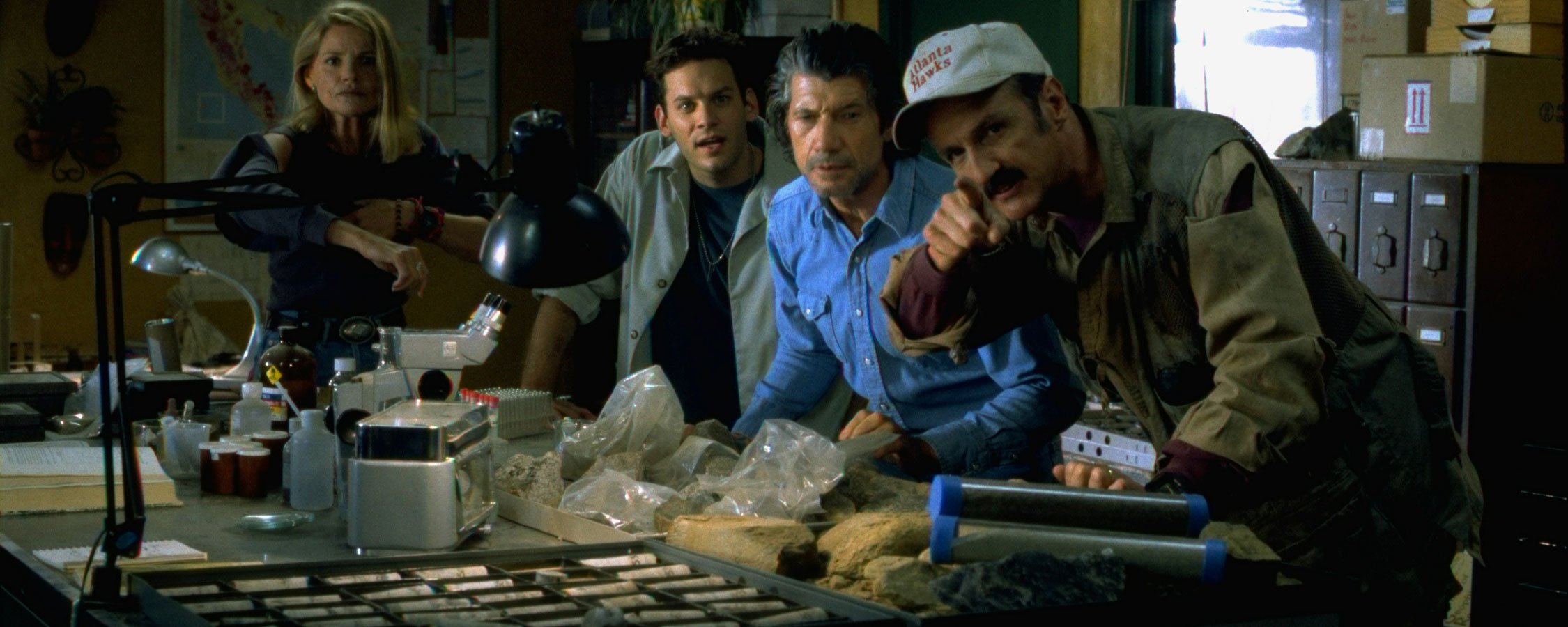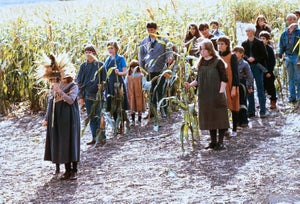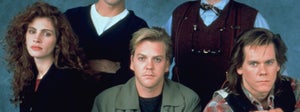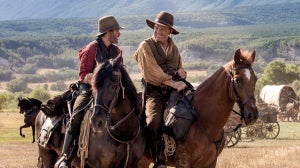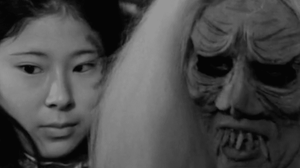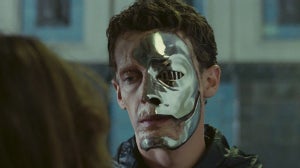
The Arrow re-release of Tremors 2: Aftershocks (1996), offers a rare opportunity to explore the straight-to-video marketplace, allowing us to examine those unusual delights that fly in the face of our perceived notions about this often-neglected enclave of cinema.
Like the much-derided term TV movie, the phrase straight-to-video (or later DTV) is often used as shorthand to denote a cheap cash-in or rushed, low-budget follow-up to a more successful film. During the 90s, Disney in fact, turned this idea to their advantage, producing a cavalcade of inexpensive sequels to better quality originals, knowing that eager-to-please parents would snap them up at the behest of their offspring, who were desperate for more adventures featuring their favourite animated characters. This meant that questionable but kid-happy titles like Beauty and the Beast: The Enchanted Christmas (1994) and The Lion King II: Simba’s Pride (1998) became bona fide money spinners for the ever-hungry corporate mouse machine. But, to be frank, many of the usual straight-to-video sequels would lack the success and quality control of the former examples. For a lot of us, particularly those who loitered with intent at the corner-shop video rental haunts of our youth, the VHS-only sequel largely encompassed titles like Puppet Master II (1990), Ghoulies Go to College (1990), House IV: The Repossession (1992) and Hellraiser: Inferno (2000). They were always cheap, mostly nasty, and irresistible. Yet, beyond nostalgia, beyond our subjective viewpoints on the merits of cost-cutting splatter, a handful of straight-to-video sequels exist that can largely stand shoulder-to-shoulder with their more respected cinematic forebears.
Cube Zero (2004)
Okay, so technically, this did get a very, very, very limited cinema outing but if you blinked you would have missed it, meaning that it pretty much qualifies as a straight-to-DVD release. Though the excellent original film Cube (1997) had been followed by Cube 2: Hypercube (2002), it would be the third outing Cube Zero, which would seek to recapture the chillingly disturbing feel of the first. A kind of prequel, it switches the focus from the prisoners to the technicians and creators of the cube, who are tasked with observing the behaviours of the unfortunate captives. Though the acting lacks subtlety and it looks cheap in a way that only low-budget noughties effects films do, it’s pacey and horrid in all the right ways. At one point a character is melted by acid, another is torn apart Hellraiser style while another is burned alive. It’s a fittingly bleak yet entertaining continuation of this fascinatingly ingenious franchise.
https://youtu.be/YBdLl2CFd50?feature=shared
The Prophecy II (1998)
Reprising his role as Gabriel, a sort of smart-talking Tarantino villain meets actual angel of death, Christopher Walken continues his campaign of chaos on earth. Kicked out of Hell for being too sassy, Gabriel aims to prevent the birth of a Nephilim – the offspring of an angel and human. Co-written and directed by Gregg Spence, who had impressed the producers with his work on another straight-to-video sequel, Children of the Corn IV: The Gathering (1996), serves up a nice bit of post-video-nasty blood-letting and intrigue in this impressively stylish Satanic follow-up. Largely filmed between the hours of dusk and dawn, the movie carries with it that strange twilight feel, as though we are watching something that truly feels unearthly or stuck between the dream and the nightmare. Walken is arguably at his most Walken here. A chillingly charismatic bad guy with a morally corrupt mission against God and mankind.
https://youtu.be/C7PSZ7NDEgU?feature=shared
Species III (2004)
Species (1995) offered up a serial killer plotline donning the fancy dress of HR Geiger-inspired science fiction. The genius premise, that detailed an alien invasion by proxy, whereby extra-terrestrial beings transmitted a genetic code for a new life form to scientists on Earth, which would then escape and go on a murder spree, is arguably the strongest element of the entire franchise. However, while Species II (1998) felt more of a re-tread, Species III, a somewhat tardy entry coming six years later, sought to open up the concept, playing again with parental concerns and the intrusion of science at any cost. As if pre-empting the relationship of Hopper and Eleven in the TV show Stranger Things, an uneasy father/daughter bond is explored when bio-chemist Abbot takes charge of human/alien hybrid Sara. And if the original movie had riffed on Village of the Damned (1960), Species III with its bio-chemistry/scientific focus brings it closer in line with the later Children of the Damned (1964) or even Cronenberg’s The Brood (1982)
https://youtu.be/5KU2o7QmB9A?feature=shared
Children of the Corn IV: The Gathering (1996)
A slightly asinine entry into the monstrous-child sub-genre, Children of the Corn (1984), based on Stephen King’s much better short story of the same name, was never really in any danger of outdoing previous work that had dealt with the subject in more original ways. Movies like The Omen (1976), The Exorcist (1973), and the Spanish production Who Can Kill a Child? (1976) will always garner more critical acclaim. However, a good dose of horror and 80s-style silliness can also be a good thing. But on the whole, as it continued, the Children of the Corn franchise suffered from quick burnout and a distinct lack of imagination. But Gregg Spence’s turn at the helm offered up a refreshing take on the flagging storyline. Starring Naomi Watts (Mulholland Drive, King Kong), Children of the Corn IV: The Gathering, is a spooky, back-to-basics horror, which revels in 80s past glories but which is also not afraid to show its more post-modern leanings. Dark, creepy, and atmospheric, it feels like a throwback to the video nasty era, but unlike many films forced inelegantly onto VHS, because of budget restrictions, etc., this feels more than at home in its chosen format.
https://youtu.be/rQWxggOGlZc?feature=shared
Tremors 2: Aftershocks (1996)
The original Tremors (1990), had performed fairly miserably at the box office on its release, but as with many movies from that era, it had picked up a considerable cult following upon its dissemination onto the home video market. So, when it came to Tremors 2: Aftershocks Universal, recognizing the unfeasibility of a cinematic release, decided to cut out the middle-man, by going direct to video, and arguably it is the crowing jewel in the entire straight-to-video sequel history. More than a match for its theatrically distributed forerunner, it fizzles with 50s-style B-Movie charm, witty one-liners, and lots of explosions. Its clever plotting and excellent casting make for a delightfully entertaining monster-mash romp in the sand.
https://youtu.be/2ZdxfbQf84g?feature=shared

